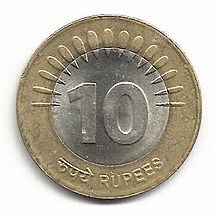
Sometime back I got some plumbing work done. The plumber said the work would take around eight hours or one full day. Once he started working, it took me a couple of hours to figure out that he was basically wasting time and he could easily finish work in four hours.
I confronted him on this and he agreed. The logic he offered for wasting time was very interesting. He said, plumbing was a profession that needed some experience and expertise. He had the necessary experience and expertise and could work faster than the average plumber could. The trouble was whenever he finished worked fast, the customers would dilly dally in paying him, the amount of money, that had been agreed on.
The reason always offered was, “but that hardly took any time”. He found it very difficult to explain to his customers that it barely took any time simply because of his experience and expertise. Hence, over the years, he had come to the conclusion that it simply made more sense to waste time and then get paid the amount that had been agreed on.
Both the customer and the plumber lost out in the process. The plumber by having to waste more time, couldn’t take on more work or he couldn’t spend those extra hours in leisure, if he did not want to work. The customer also had to keep engaging with the plumber for those extra hours. In the process, both of them lost out.
Dan Ariley and Jeff Kreisler discuss a similar story about a locksmith in their book Dollars and Sense—Money Mishaps and How to Avoid Them: “A locksmith once told Dan that when he started his career, he took forever to open a lock, in the process, he often broke it, taking even more time and money to get one properly installed and finish the job… People were happy to pay for all this, and they tipped him well… As he became proficient and opened a lock quickly, without breaking the old lock… customers not only didn’t tip, but they also argued about his fee.”
This is a phenomenon, where we confuse effort and outcome, and in the process award incompetence. Take the case of many people leaving office late, even if they have no work and no reason to hang around. But by hanging around they are just trying to send that signal to their bosses that they are putting in a lot of effort, which hopefully will be rewarded once appraisals come around.
Of course, many bosses confuse this “useless” effort of hanging around, with the employee adding value to the organisation. And once a few employees start doing this in an organisation, almost everyone else has to. In the end, more than rewarding anyone, this just becomes a “nuisance” that everyone needs to follow.
In fact, Dan Ariely carried out a research along with On Amir, on how much would people pay for data recovery. The result was very interesting: “When the data recovery took only a few minutes, willingness to pay was low, but when it took more than a week to recover the same amount of data, people were willing to pay much more. Think about it: They were willing to pay more for the slower service with the same outcome.”
The point being that when effort is more valued than outcome, we end up paying for incompetence. There is a great story about the painter Pablo Picasso, perhaps apocryphal, which shows precisely this. A woman once approached Picasso and asked him to paint her portrait. The painter looked at her, and then with a single stroke, drew her a perfect portrait.
The woman was impressed and told Picasso that he had captured her essence in a single stroke. She asked him: “How much do I owe you?” Picasso asked for $5,000. The woman was aghast. “It only took you a few seconds,” she said. To which Picasso replied: “No, ma’am. It took me an entire life and a few more seconds.”
The column originally appeared in the Bangalore Mirror on Feb 14, 2018.



